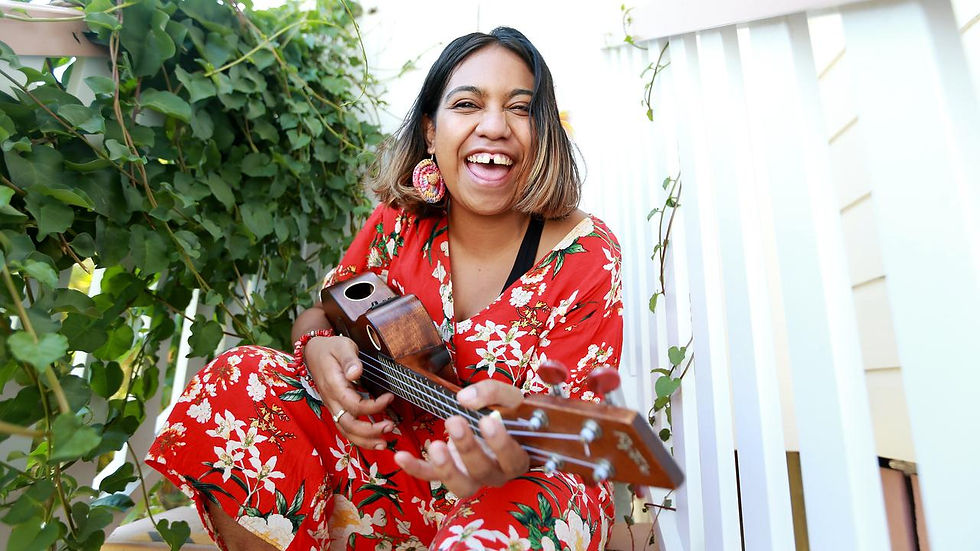Invisible Roots: How Young Artists Are Reimagining Tribal and Celtic Traditions
- Stevie Connor

- Aug 2
- 5 min read

Photo Credit - Soner Arkan
When I was a boy, my father taught me to play the bagpipes. It wasn’t just about the notes or breath control — it was about honouring something bigger than myself. He handed down a tradition that is centuries old, carved into the landscape of our Scottish ancestry and etched into our identity. In that act, I became a carrier of something ancient. Something invisible. Something sacred.
I didn't know it then, but this intimate act — a father passing music to a son — was not unique to Scotland. It echoes through rainforests, deserts, islands, and tundra. Across the world, ancestral music is handed down, reshaped, revived. Today, a global generation of artists is reawakening those roots — not just Celtic, but tribal and Indigenous lineages — and they're doing it in bold, genre-defying ways.
They are not curators of museums.They are conjurors of living ritual.
Tradition as Compass, Not Cage
Celtic and tribal music traditions often share the same DNA: oral transmission, a deep connection to land and ancestry, and a sense of music as both a communal and spiritual force. But in our hyper-digitized era, these traditions face an uncomfortable question: how do we survive when we are not trending?
The answer, it turns out, is found in fusion — but not fusion for the sake of novelty. These artists reach into the archive not to copy, but to converse with the past. They remix spirit songs with ambient drones, pair foot-stomping fiddle riffs with techno pulses, and place ancient instruments on modern stages. They honour the sacred while pushing sound forward.
Mànran (Scotland)
A force in the modern Scottish folk scene, Mànran seamlessly blends Gaelic song and contemporary folk-rock elements. Their multilingual lyrics and thunderous arrangements are as much about cultural resilience as they are about musical innovation.
🌐 manran.co.uk | ▶️ YouTube

Ímar (Scotland/Ireland/Isle of Man)
Featuring members from across the Celtic nations — including Ireland, the Isle of Man, and Scotland — Ímar are virtuosos with a shared reverence for instrumental firepower. Their tightly woven tunes are fast, joyful, and grounded in deep traditional roots, yet delivered with youthful flair and fearless velocity.
🌐 imarband.com | ▶️ YouTube

Ye Vagabonds (Ireland)
Ye Vagabonds — brothers Brían and Diarmuid Mac Gloinn — are at the forefront of Ireland’s modern folk revival. They bring delicate harmony, traditional Irish instrumentation, and an almost sacred stillness to songs old and new. Their music is a quiet revolution — one that invites listeners inward.
🌐 yevagabonds.com | ▶️ YouTube

Trad.Attack! (Estonia)
The Estonian trio dig deep into archived field recordings, breathing fire into them with electric guitars, pulsing rhythms, and searing bagpipes. They collaborate with voices of long-gone village singers, sampled directly into their live sets and albums — an electrifying bridge across time.
🌐 tradattack.ee | ▶️ YouTube

Maija Kauhanen (Finland)
Maija Kauhanen is a one-woman powerhouse — singer, percussionist, and master of the Finnish kantele. Drawing on the ancient vocal tradition of runo-song, her music blurs the boundaries between folk, trance, and cinematic minimalism.
🌐 maijakauhanen.com | ▶️ YouTube

Emily Wurramara (Australia)
Singing in both English and her native Anindilyakwa, Emily Wurramara from Australia’s Northern Territory crafts songs that speak of country, resilience, and identity. Her music bridges ancient stories with contemporary songcraft and is part of a broader Indigenous renaissance.
🌐 emilywurramara | ▶️ YouTube

PIQSIQ (Inuit – Northern Canada)
Sisters Tiffany Ayalik and Inuksuk Mackay honour the Inuit katajjaq (throat-singing) tradition but infuse it with darkwave textures, ambient soundscapes, and ritualistic stage presence. The result is nothing short of sonic ceremony.
🌐 piqsiq.com | ▶️ YouTube

Carminho (Portugal)
While fado is not tribal in the geographic sense, Carminho’s interpretation of this centuries-old Portuguese genre is deeply rooted. Her voice, shaped by saudade, holds space for tradition while embracing modern jazz and Latin influences.
🌐 carminhomusic.com | ▶️ YouTube

El León Pardo (Colombia – Amazon Basin)
Mixing shamanic chants, Afro-Colombian percussion, and urban beats, El León Pardo creates a soundscape where jungle meets city, and myth meets movement. His performances are part ritual, part rave — always deeply intentional.
🌐 @elleonpardo | ▶️ YouTube

Elephant Sessions (Scotland)
From the Highlands of Scotland, Elephant Sessions fuse folk instruments like fiddle and mandolin with funk, indie-rock, and EDM-inspired beats. Their sound is exuberant and floor-filling — part traditional dance tune, part euphoric rave.
🌐 elephantsessions.com | ▶️ YouTube

These artists — and countless others like them — remind us that tradition is not a museum. It’s a living thing. It grows, changes, argues with itself, and adapts. When young artists take the bones of old songs and give them new flesh, they’re not breaking the rules. They’re keeping the soul alive.
And for those of us lucky enough to carry a piece of that music — a chanter passed from father to son, a song sung around a fire, a story stitched into a drum — the responsibility is clear: honour it, but don’t let it gather dust.
The future of Celtic and tribal music isn’t behind us. It’s right here, pulsing, vivid, and very much alive. They remind us that the most radical music is often the most rooted. That technology can serve memory. That honouring your ancestors can sound like a beat drop, a fiddle scream, or a whispered lullaby in a language long forgotten.
In carrying the bagpipe tradition my father gave me, I feel a connection to all of them — and to something much older than any of us.

Stevie Connor, a Scottish-born polymath of the music scene, is renowned for his versatility across various domains within the industry. Initially destined for football, Stevie's heart found its true calling in music. His multifaceted journey has seen him excel as a musician, composer, recording artist, journalist, and internet radio pioneer.
In 2012, Stevie laid the foundation for Blues and Roots Radio, an online platform that quickly became a global stage for blues, roots, folk, Americana, and Celtic music. His visionary leadership propelled the platform to international acclaim. Not content with just one venture, Stevie expanded his influence in 2020 by founding The Sound Cafe Magazine, a multilingual platform dedicated to artist interviews, album reviews, and music news.
Stevie's impact extends beyond these platforms. His discerning ear and industry acumen have presented opportunities to be selected as a juror for national awards such as the JUNO Awards, the Canadian Folk Music Awards, and the Maple Blues Awards. Through his tireless efforts, he has earned a solid reputation within the music community, garnering respect from peers and artists alike.
Despite his extensive responsibilities, Stevie remains deeply connected to his roots, both musically and geographically. He continues to contribute to the vibrant tapestry of the music world, ensuring his influence resonates far beyond any single platform. Stevie's enduring passion and commitment to music make him a true luminary in the industry.
Stevie is a verified journalist on the global PR platform, Muck Rack.
READ MORE BY STEVIE...
www.thesoundcafe.com/post/exclusive-article-between-the-notes-the-heart-of-mick-hanly
www.thesoundcafe.com/post/exclusive-article-the-resilience-and-radiance-of-kat-goldman
www.thesoundcafe.com/post/exclusive-article-chapter-excerpts-from-the-long-road-to-flin-flon
www.thesoundcafe.com/post/introduction-the-long-road-to-flin-flon


